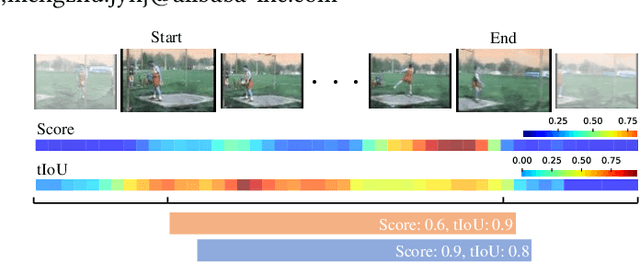Estimation of Reliable Proposal Quality for Temporal Action Detection
Paper and Code
Apr 25, 2022



Temporal action detection (TAD) aims to locate and recognize the actions in an untrimmed video. Anchor-free methods have made remarkable progress which mainly formulate TAD into two tasks: classification and localization using two separate branches. This paper reveals the temporal misalignment between the two tasks hindering further progress. To address this, we propose a new method that gives insights into moment and region perspectives simultaneously to align the two tasks by acquiring reliable proposal quality. For the moment perspective, Boundary Evaluate Module (BEM) is designed which focuses on local appearance and motion evolvement to estimate boundary quality and adopts a multi-scale manner to deal with varied action durations. For the region perspective, we introduce Region Evaluate Module (REM) which uses a new and efficient sampling method for proposal feature representation containing more contextual information compared with point feature to refine category score and proposal boundary. The proposed Boundary Evaluate Module and Region Evaluate Module (BREM) are generic, and they can be easily integrated with other anchor-free TAD methods to achieve superior performance. In our experiments, BREM is combined with two different frameworks and improves the performance on THUMOS14 by 3.6$\%$ and 1.0$\%$ respectively, reaching a new state-of-the-art (63.6$\%$ average $m$AP). Meanwhile, a competitive result of 36.2\% average $m$AP is achieved on ActivityNet-1.3 with the consistent improvement of BREM.
 Add to Chrome
Add to Chrome Add to Firefox
Add to Firefox Add to Edge
Add to Edge